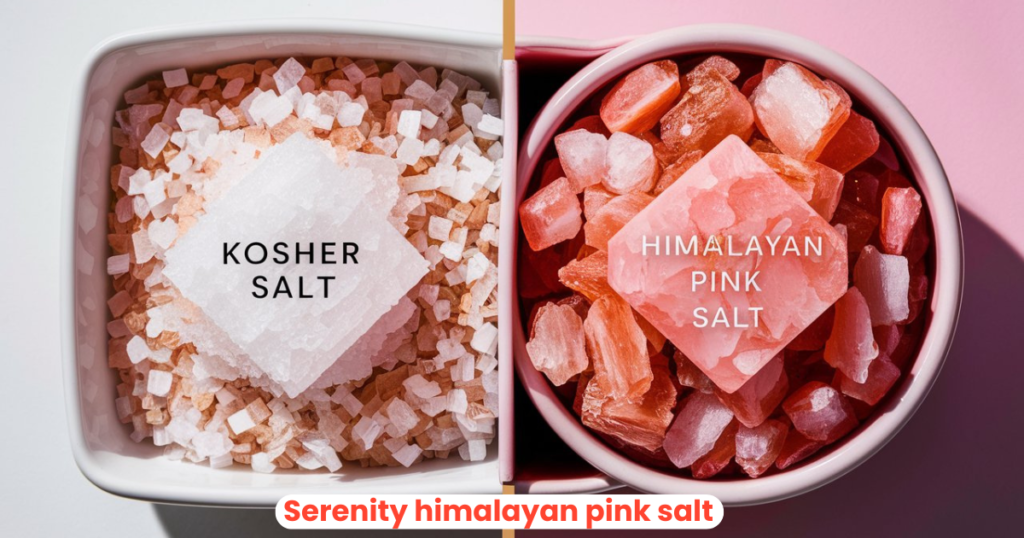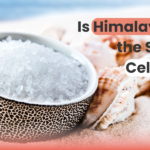Salt is an essential ingredient in cooking and plays a crucial role in our overall health. Two popular types of salt are Kosher salt and Himalayan pink salt. This article will explore the differences between them, their benefits, and how to choose the right one for your needs.
What is Salt?
Salt, chemically known as sodium chloride (NaCl), is a mineral essential for human health. It has been used for centuries not only to enhance the flavor of food but also for preservation. Salt is harvested from various sources, including seawater and rock deposits.
Kosher Salt
What is Kosher Salt?
Kosher salt is a type of salt with larger, flakier crystals compared to table salt. It gets its name from its use in the Jewish practice of koshering meat, which involves removing blood.
- Production Process: Kosher salt is typically mined and then purified. The crystals are larger due to minimal processing.
- Physical Characteristics: Kosher salt has a flaky texture and larger grain size, making it easy to pinch and sprinkle.
Uses of Kosher Salt
- Culinary Applications: Kosher salt is preferred by chefs for seasoning and as a finishing salt due to its texture.
- Koshering Meat: It is used in the koshering process to draw out blood from meat, adhering to Jewish dietary laws.
Himalayan Pink Salt
What is Himalayan Pink Salt?
Himalayan pink salt is a rock salt mined from the Khewra Salt Mine in Pakistan. It is known for its distinctive pink color, which comes from trace minerals.
- Origin and Production Process: Himalayan pink salt is extracted by hand and minimally processed, retaining its natural minerals.
- Physical Characteristics: It ranges in color from light pink to deep red, depending on mineral content. The grains can be fine or coarse.
Uses of Himalayan Pink Salt
- Culinary Applications: It is used for seasoning and as a finishing salt. Its unique color also makes it a popular decorative salt.
- Health and Wellness Uses: Often used in salt lamps, bath salts, and spa treatments due to its purported health benefits.

Key Differences Between Kosher Salt and Himalayan Pink Salt
| Feature | Kosher Salt | Himalayan Pink Salt |
| Sodium Content | Similar to Himalayan pink salt but may be used in smaller quantities due to larger crystals | Similar to Kosher salt but contains additional trace minerals |
| Mineral Composition | Mostly pure sodium chloride, free from additives | Contains trace minerals like potassium, magnesium, and calcium |
| Flavor Profile | Clean, straightforward taste | More complex flavor due to mineral content |
| Texture and Appearance | Large, flaky crystals, white in color | Varies from fine to coarse grains, pink to red in color |
| Best Uses | General cooking, seasoning, koshering meat | Finishing dishes, decorative presentations, wellness uses |
Health Benefits and Concerns
Health Benefits of Kosher Salt
- Free from additives like iodine, which some people prefer to avoid.
- Easier to control in cooking due to its large crystals.
Health Benefits of Himalayan Pink Salt
- Contains trace minerals beneficial for health.
- Believed to improve respiratory and skin conditions when used in non-culinary applications.
Potential Health Concerns and Considerations
- Kosher Salt: Lack of iodine, which is essential for thyroid health, may be a concern for some individuals.
- Himalayan Pink Salt: While rich in minerals, it should still be consumed in moderation to avoid excessive sodium intake.
Which Salt is Right for You?
Choosing between Kosher salt and Himalayan pink salt depends on your specific needs and preferences.
- Culinary Uses: For everyday cooking, Kosher salt’s texture makes it easy to handle. Himalayan pink salt adds a unique flavor and visual appeal to dishes.
- Health Considerations: If you need iodine in your diet, consider iodized salt or supplementing with iodine-rich foods. For those seeking additional minerals, Himalayan pink salt is a good option.
Conclusion
Both Kosher salt and Himalayan pink salt offer unique benefits and uses. Understanding their differences can help you make an informed choice for your culinary and health needs.
Frequently Asked Questions (FAQs)
- Is Kosher salt healthier than Himalayan pink salt? Both have their benefits, but Himalayan pink salt contains more trace minerals.
- Can I use Himalayan pink salt in place of Kosher salt? Yes, but be mindful of the texture and flavor differences.
- Why is Himalayan pink salt more expensive? It is mined by hand and contains a higher mineral content.














